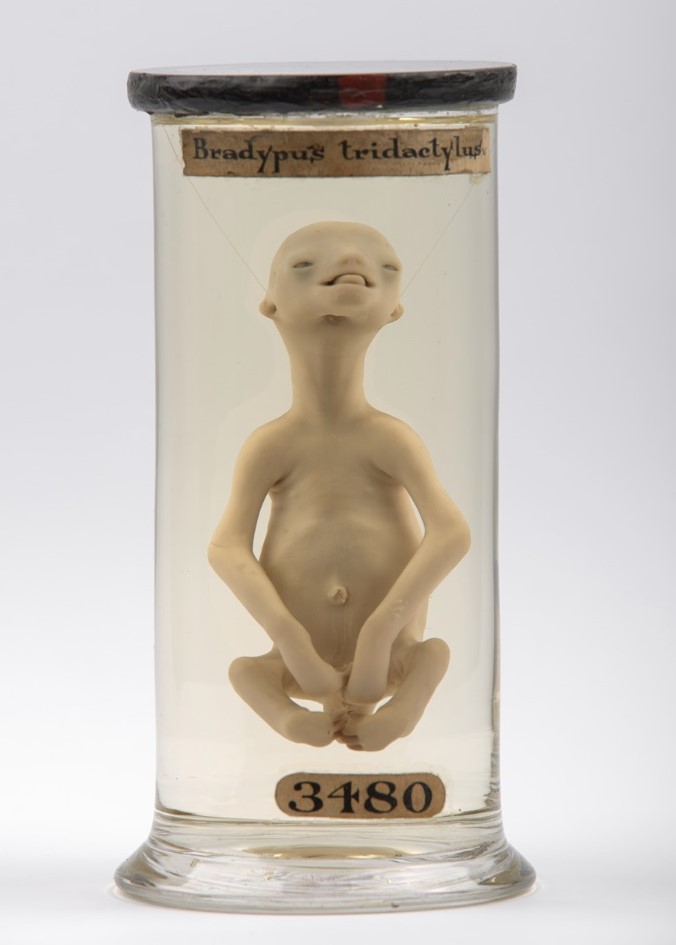Last week I was able to visit the reopened Hunterian Museum at the Royal College Of Surgeons on Lincoln’s Inn Field. This is an anatomical, pathology and natural history collection originally started by 18th-century Scottish surgeon John Hunter, who acquired thousands of specimens – human and animal – in his desire to understand the natural world. Here is one of my favourites, a cute little foetus of a sloth.

I wrote about the collection and Hunter’s motivations for Apollo and you can read that article here.
It’s easy to cast the Hunterian as a sort of sophisticated freak show – a place where you can see diseased organs, strange animals, skeletons and a large number of dead babies. And to a certain extent – or at least to modern eyes – that is exactly what it is. But it’s important to understand the collection in the context of the time, before X-rays, aspirins, anaesthetic and all the other miracles of modern medicine that we take entirely for granted.
Hunter collected because he wanted to understand and he wanted to understand because he wanted to improve. His curiosity and motivation (and his approach to ethics) is very similar to that of John Soane, whose own vast jumble of artistic and architectural wonders can be viewed on the other side of Lincoln’s Inn Field.
Take just a moment to think about that. Here are the two cultures – art and science – in the form of two collections amassed by obsessed and committed individuals, facing each other across a large garden square in a pair of incredible free museums, either of which would be the envy of most national or city collections. London is by no means perfect, but – much like the scientific improvements that Hunter’s inquisitive mind helped propagate – such marvels should never be overlooked or underestimated.
